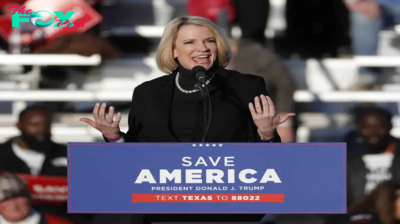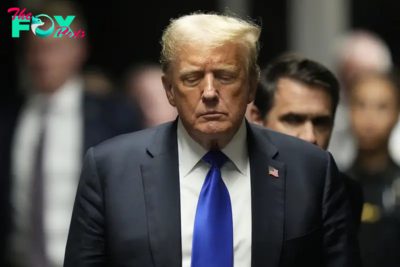US News
America Should Embrace a Parliamentary Democracy
Our nation faces the serious threat of electing Donald Trump for a second term despite his willingness, even enthusiasm, for gutting vital democratic norms. What appears to be a glitch in the U.S. electoral system is actually an inherent feature: it can produce a dictator.
Many voters regard our centuries-old system as fundamentally sound and wise. But this view is mistaken: Our two-party presidential scheme produced Donald Trump. And ending the risk of electing a dictator means giving up our right to vote for one.
The solution lies in embracing a system of parliamentary democracy that blunts the risk of an extremist taking power—one that leading political scientists consider the best means of doing democracy. The scheme, called mixed-member proportionality (MMP), is uniquely suited to ending the ongoing threat of dictatorship posed by our two-party presidential system. Under MMP, voters will give up voting directly for President and Vice President in exchange for genuine power to affect the direction of our government, all while diminishing the threat of an authoritarian gaining power.
In our two-party presidential system, the risk of an authoritarian like Trump gaining power always lay just beneath the surface. The very structure of our system invites it.
The ever-present danger of our system is an extremist representing a subset of voters gaining control over one party, then prevailing against the other in the general election. This renders two-party presidentialism ripe for dictatorial exploitation. Each side’s overwhelming demand for unity, including with constituencies embracing deeply problematic views, forces us into two comPeting camps. The threat to democracy becomes acute when these pressures become so intense that one party succumbs to the will of a leader bent on doing whatever it takes to gain and hold power. When a party leader, such as Trump, is singularly focused on power, voter suppression, hyper-partisan gerrymandering, obstructive legislative tactics, and manipulative confirmation practices risk being transformed from outlier strategies to playbook. Even fomenting a violent attempt at blocking the peaceful transfer of power, and demanding loyalists condone it, becomes just another Wednesday. Our system’s demand for unity is so strong that once each party settles on its presidential candidate, party elites see their job as serving even the most problematic standard bearer.
Both parties need not experience these power dynamics in the same way. The ultimate threat to democracy arises when an opportunistic leader takes control of one party while exploiting tensions beneath the surface on the other side. Trump’s nationalist campaign not only transformed the GOP; it has also stressed the fault lines between the centrist Democrats and that party’s progressive base.
Intuitively, voting directly for President and Vice President might seem to safeguard against a dictator. Voters can simply vote for the other candidate. Instead, our system disempowers voters by demanding that they choose the lesser of two evils every four years. Partisan extremism risks leading voters on each side to rally behind their candidate—no matter how problematic—viewing the other as an existential threat.
An irony of two-party presidentialism is that as the threat to democracy grows, voters feel increasingly disengaged and disempowered.
There is a genuine pathway forward: transform the U.S. into a thriving multiparty parliamentary democracy. The solution demands changing two features of how we do the Business of democracy in the U.S. We must change how we elect the House of Representatives and how we choose and hold accountable the President. The centerpiece shifts the choice of President from voters to House party leaders. To appreciate why this alternative system is superior to ours, we must revisit some commonly held intuitions about our own electoral Politics.
Successful democracies embrace two defining features missing in American democracy: proportional representation and coalition governance. These attributes of well-designed parliamentary systems dramatically lower the risk of an authoritarian taking power. Proportional representation means parties are seated in the legislature, typically the lower chamber, based on their relative percentages of votes. Coalition governance is a process by which party leaders, based on proportional representation, negotiate to form a governing majority and the party that leads the successful negotiation then heads the government.
Democracy is about ensuring voters have genuine input into what their choices are. Limiting our choices to two candidates, Joe Biden and Trump, despite a supermajority—63%—of voters frustrated by our two parties and hoping for more options, doesn’t empower voters. Voters are empowered when the options before them meaningfully reflect their values. This explains why, as political scientist Arend Lijphart shows in his book Patterns of Democracy: Government Forms and Performance, voters in coalition systems are happier. They turn out in higher numbers. Their governments are more responsive.
Voters in our system rightly wish for third parties, with candidates who truly align with their sincerely held beliefs and preferences. But to have viable third, fourth, or more parties, we must give those parties a genuine role in governance. That means the power to join a governing coalition in exchange for delivering policy commitments or favored appointments to their constituents. Unlike two-party presidentialism, multi-party coalitions give third parties that role.
A comparison of systems in different democracies reveals that two seemingly opposite dynamics pose the same threat. Two-party presidentialism invites the risk of an authoritarian taking over one party, then taking control of the government. But in an electoral scheme with too many parties, the threat of an authoritarian seizing control also resides beneath the surface. With too many parties, one party led by a charismatic leader who represents a minority of the electorate can gain more seats than any other even if far short of a majority. This becomes the first step in rolling over other parties, one by one, in the quest for eventual control. This very danger, experienced in the Nazi regime, contributed to post-World War II Germany embracing MMP, which political scientists widely consider the best way to do democracy.
To thwart dictatorship, we must fight against the twin threats. We must achieve the political Goldilocks principle—not many parties, nor too few.
Political scientists recognize the solution and agree that MMP is the most well-functioning democratic scheme. MMP produces more parties, with a sweet spot between four and eight. It does so by blending two forms of electoral representation in the lower legislative chamber, for us the House of Representatives. In the U.S., each voter would cast two ballots, one by district, as we do now, and one by party. Winner-take-all district voting will still favor two parties. But the party votes would then be used to ensure that each state’s House delegation reflects party proportionality. The combination makes it exceedingly difficult for any single party to capture a majority of seats in the House.
The most vital step in the fight against dictatorship comes next. In descending order of representation, up to five party leaders negotiate until a majority coalition forms. With supporters no longer wasting votes, third parties helping form a coalition will demand policy concessions or favored appointments as their price, providing genuine value to their constituents. The party that succeeds in negotiating a majority coalition will have its predesignated slate assume the offices of President and Vice President.
This scheme will end the two-party presidential system—and the risk of dictatorship—and transform the U.S. into a thriving multi-party parliamentary system. Candidates can no longer succeed simply by denigrating the other side. They must demonstrate a willingness to govern with other parties, despite inevitable policy disagreements. Party leaders will no longer succumb to extremists for fear of fracturing their side and ceding power to the opposition. Instead, they’ll realize that success demands moderating stances to forge majority coalitions.
Read more: What to Know About the Origins of ‘Left’ and ‘Right’ in Politics, From the French Revolution to the 2020 Presidential Race
Two-party presidentialism disallows the moderating iNFLuence, and pressures, required for effective coalition governance. As the GOP shrinks in size, calls for unity increasingly mean acquiescing to Trump’s most outrageous demands. This includes embracing lies about 2020 election fraud and the events of January 6, 2021. For Democrats, growing fragmentation marked by an unpopular incumbent and divisions associated with his age, handling of the southern border, and navigating the Middle East, risk threatening Biden’s ability to maintain the coalition and turnout that propelled him into the White House in 2020.
However the 2024 election is resolved, no single election can permanently end the threat of dictatorship. Accomplishing that demands radical, yet achievable, reform.
Transforming our two-party presidential system into MMP requires amending the Constitution—one amendment to change how we elect members of the House, and two that change how we select and hold accountable the President. Amendments can be proposed by a two-thirds vote of each House of Congress or by a constitutional convention called by two-thirds of states. Proposed amendments must be ratified by three-fourths of the states. The process is difficult. But it’s mistaken to believe it can’t be achieved to avert an existential threat to our democracy.
When we hit the iNFLection point of inevitable constitutional change, parliamentary America will appeal to those whose support is vital to approval. First, sitting members of both Houses of Congress keep their jobs. Second, key politicians gain new powers. Members of the House gain the power to select the President through coalition bargaining. No longer beholden to the leaders of only two parties, politicians can embrace sincerely held views without fear of retribution. And state politicians gain a new pathway to Capitol Hill through proportionality and party lists.
A shift to parliamentary America will end our constitutional crisis. We must replace two-party presidentialism with a well-designed system of multiparty coalition governance. By giving up the way we’ve elected Presidents, voters will gain more power and greater influence. Their votes will express what they truly value and, most importantly, they will gain genuine power to ensure our democracy overcomes the threat of dictatorship.
-

 US News1d ago
US News1d agoHow TIME and Statista Determined the Best Companies and Colleges for Future Leaders for 2025
-

 US News1d ago
US News1d agoWorld’s Best Brands – United States
-

 US News2d ago
US News2d agoFlorida Man Arrested and Charged With Planning to Bomb the New York Stock Exchange
-

 US News2d ago
US News2d agoU.S. Gathers Global Group to Tackle AI Safety Amid Growing National Security Concerns
-

 US News3d ago
US News3d agoTexas Offers Trump Land on U.S.-Mexico Border for Potential Mass Deportations
-

 US News3d ago
US News3d ago4B Is Not the Winning Strategy to Resist the Patriarchy People Think It Is
-

 US News3d ago
US News3d ago‘Bomb Cyclone’ Threatens Northern California and Pacific Northwest
-

 US News3d ago
US News3d agoClimate Action in Trump 2.0



















